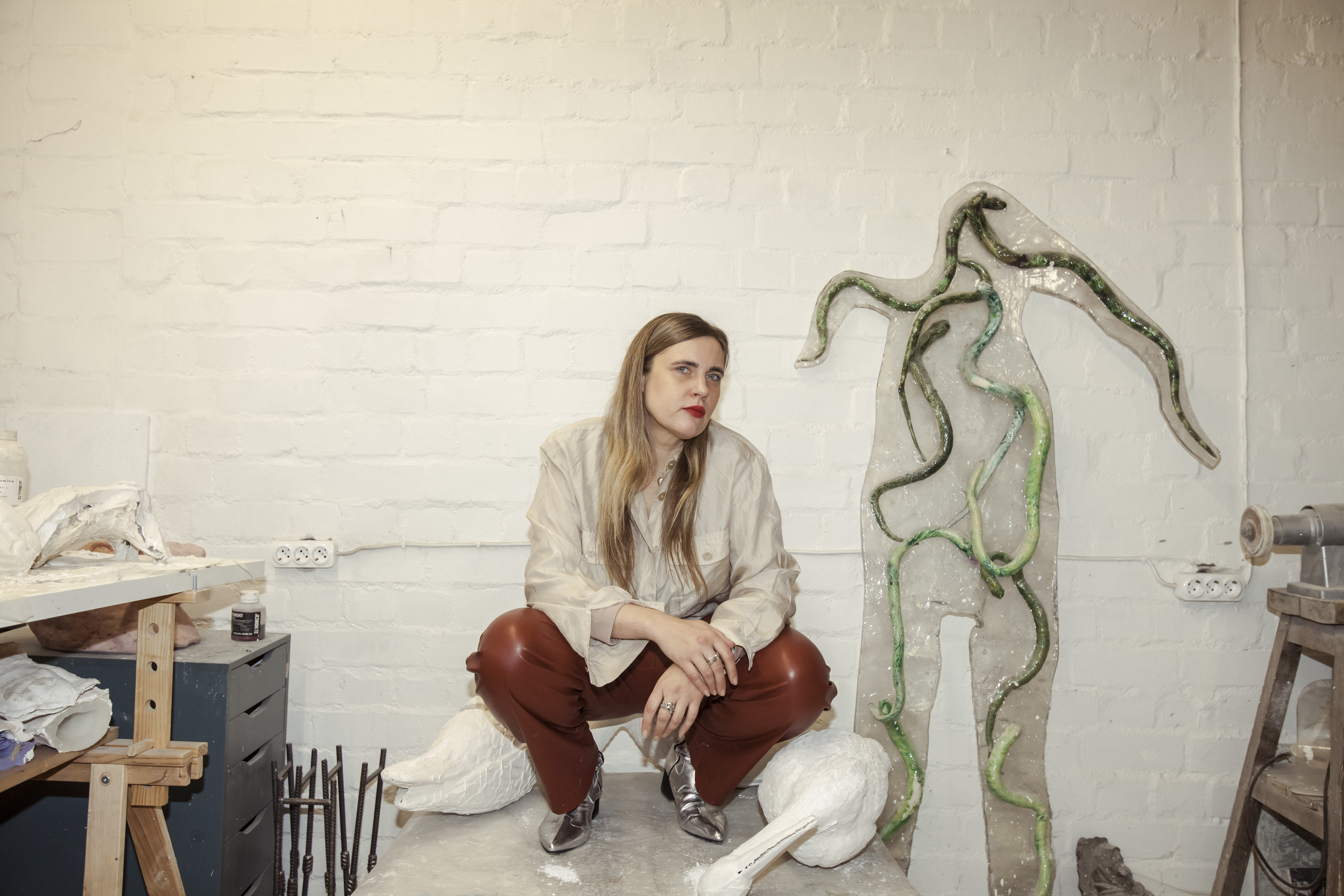
Describe your studio/work practice.
I’ve created a system for myself, where I need to be in the studio as much as possible. Physical contact with material is important to me. I need to experiment with material, to touch and play around with it. Sometimes it’s almost like a fight, where mostly I’m the loser. Not everything is always a success. Often things get totally messed up, even when I’ve put so much time and energy into it. Then again, I’ve learned to make my failures work for me but yes, direct contact with material makes things flow in the end and I can say that after years of routine and in-depth work, I’ve become quite good at what I do, I thoroughly enjoy it. My ideas are formed in material, I often don’t even know how to express them in words or define them in a clear manner but once I start working with clay, I manage to express them.
What’s the biggest risk you’ve taken as an artist?
I believe the biggest risk was the decision to become an artist. I was brave to do it.

If you could show with any artist living or dead, who would it be?
With my son.
What is your biggest influence outside of the art world?
Music, friends, nature, melancholy, humour, stupidity, cruelty, sincerity, love.
What does participation in the Venice Biennale mean to you?
It’s an opportunity to work with a fantastic team and do what makes me happy and what I like – that is such a luxury.
What do you expect in terms of your career as a result of this participation?
I always keep my expectations very low, this allows me to be surprised if something goes well… so, yeah. I’m concentrating on doing my best and not so much on the hope that the Biennale will bring something miraculous into my life. As an artist, it’s a privilege to be able to work on a project for a long time with a big team helping you and to not have to worry about structure all the time, it’s not something that happens often. I highly value the process and so far, it’s been so enjoyable. To work on such a huge exhibition is also exciting.

-Did you feel or sense anything during the application process or preparation that made you aware of being Central-Eastern European? If yes, what were the advantages or disadvantages of this? (eg.: financial aspect, reception)
I don’t have to be particularly aware of it, I’m Eastern European anyway. Whether I want it or not. I don’t spend too much time analysing it, since this is something that is in me one way or the other. Compared to larger countries, our production budget is probably a joke but that does not diminish our work or contribution in any way. Maybe we even make more of an effort and step outside of our comfort zone more.
– Do you think there is such a thing as ‘Central-Eastern European-ness’ in the field of fine arts, similar to history, politics, and culture? If yes, in what ways?
I don’t know. I’m not an art historian or a critic. Someone else would have a better answer to that. But I suppose so. History and the place you live defines you and your work a lot. I don’t really believe in some sort of all-encompassing universality – even when you are not expressively political, the surrounding context will find a way into your work.
– As an artist at the Venice Biennale, did you notice any changes in yourself during the preparation? E.g: Has your attention, taste, or opinion changed? Has your range of interests expanded? If yes, in what way?
My main concern and priority is to get enough sleep and rest… otherwise I would not be able to get through it all. Right now, I feel like I’m truly living in a rabbit hole – I go to my studio early in the morning and leave only to pick up my child from school. I don’t think my tastes or preferences have changed much, but a large project like this has provided me with new opportunities. So, inside the tunnel I’m currently in, we have extremely intense discussions both regarding the form and the content. I experiment with new materials in ways I’ve dreamt about previously and thematically, too, Hora lupi (the title of my exhibition) brings together so many ideas I’ve had in my head. Also, because this time the Estonian Pavilion is located in the church of Chiesa di Santa Maria delle Penitenti, a place of enchanting decay, the exhibition space is creating a strong and challenging dialogue with my work but I find it truly fascinating.
